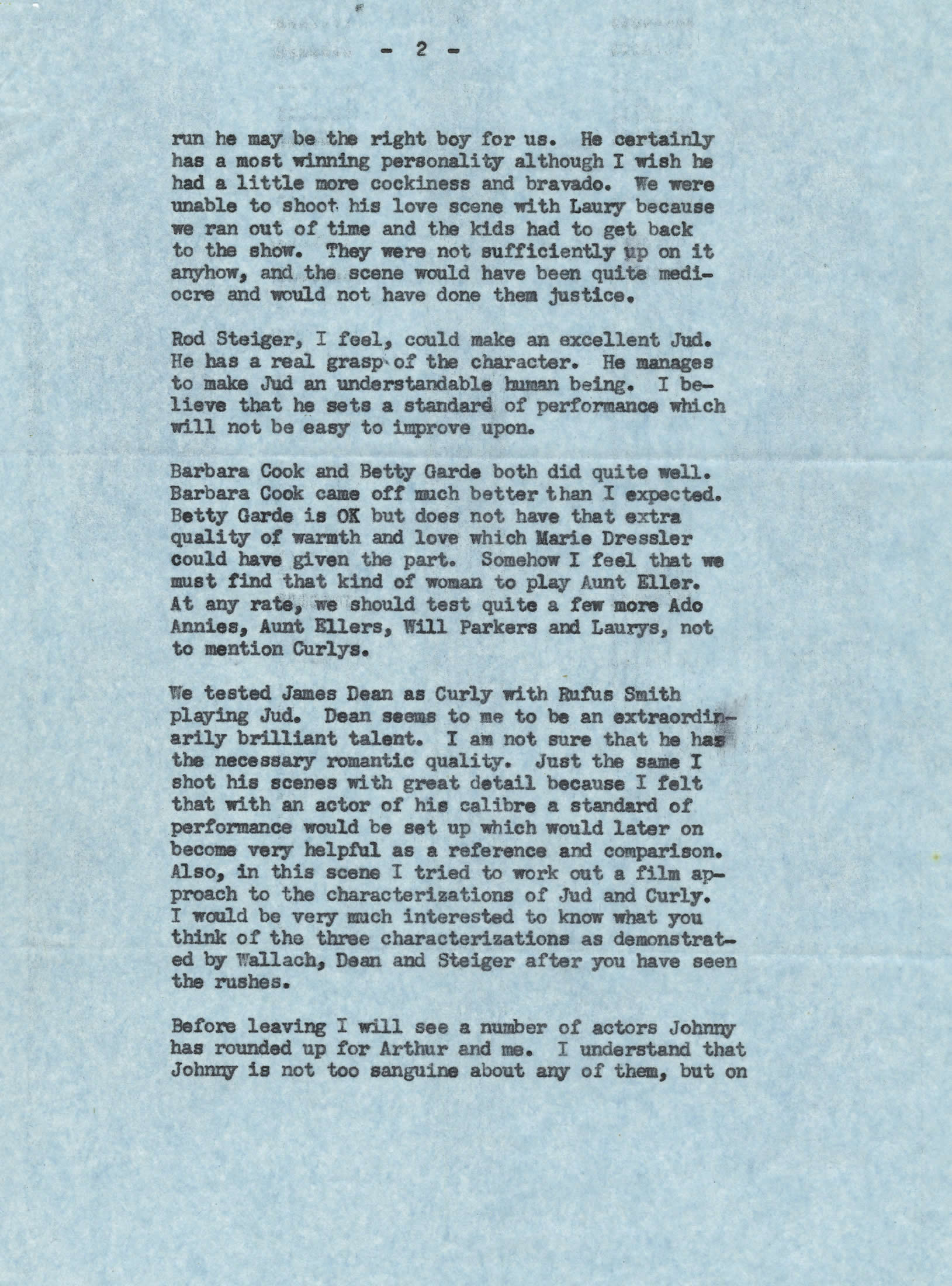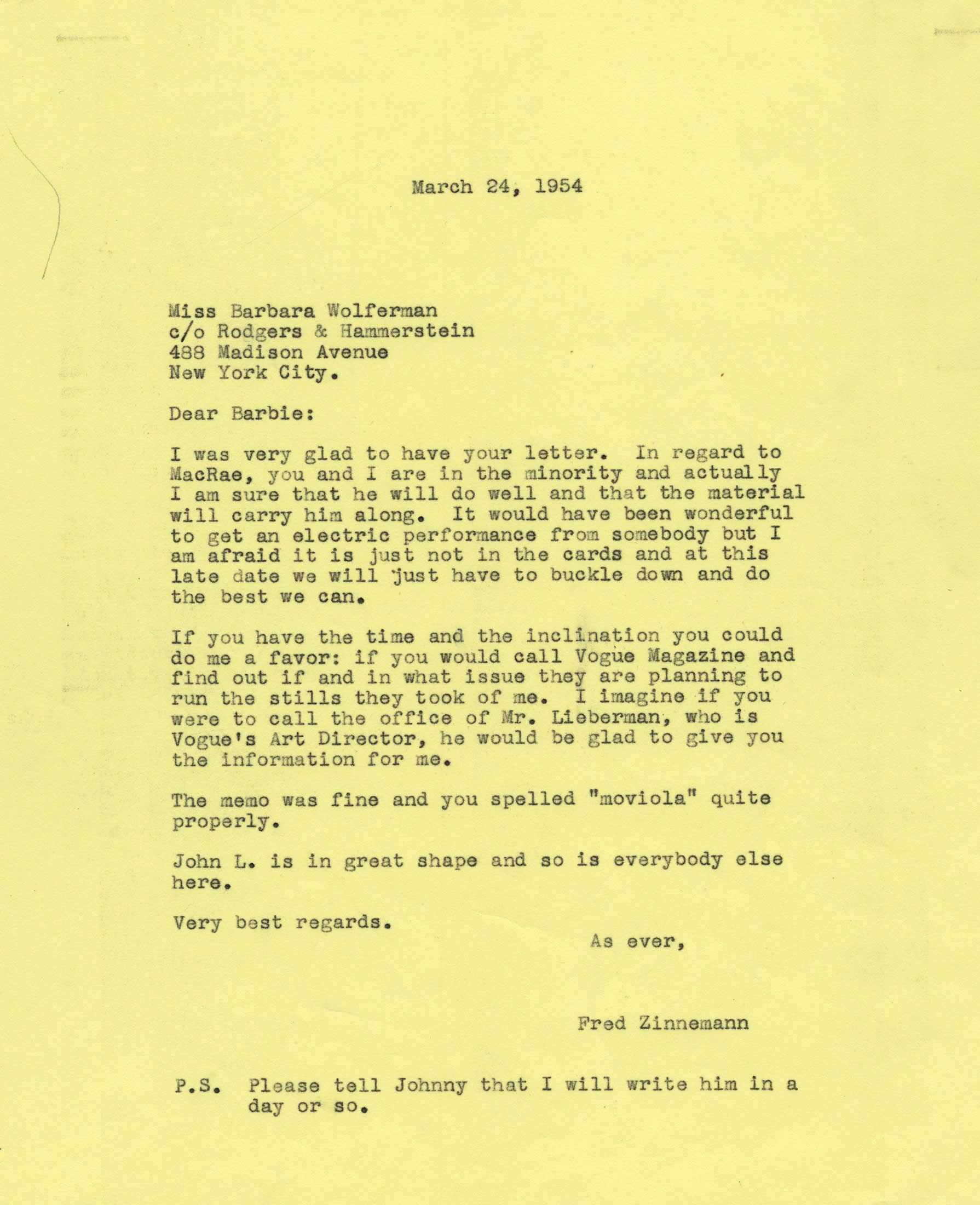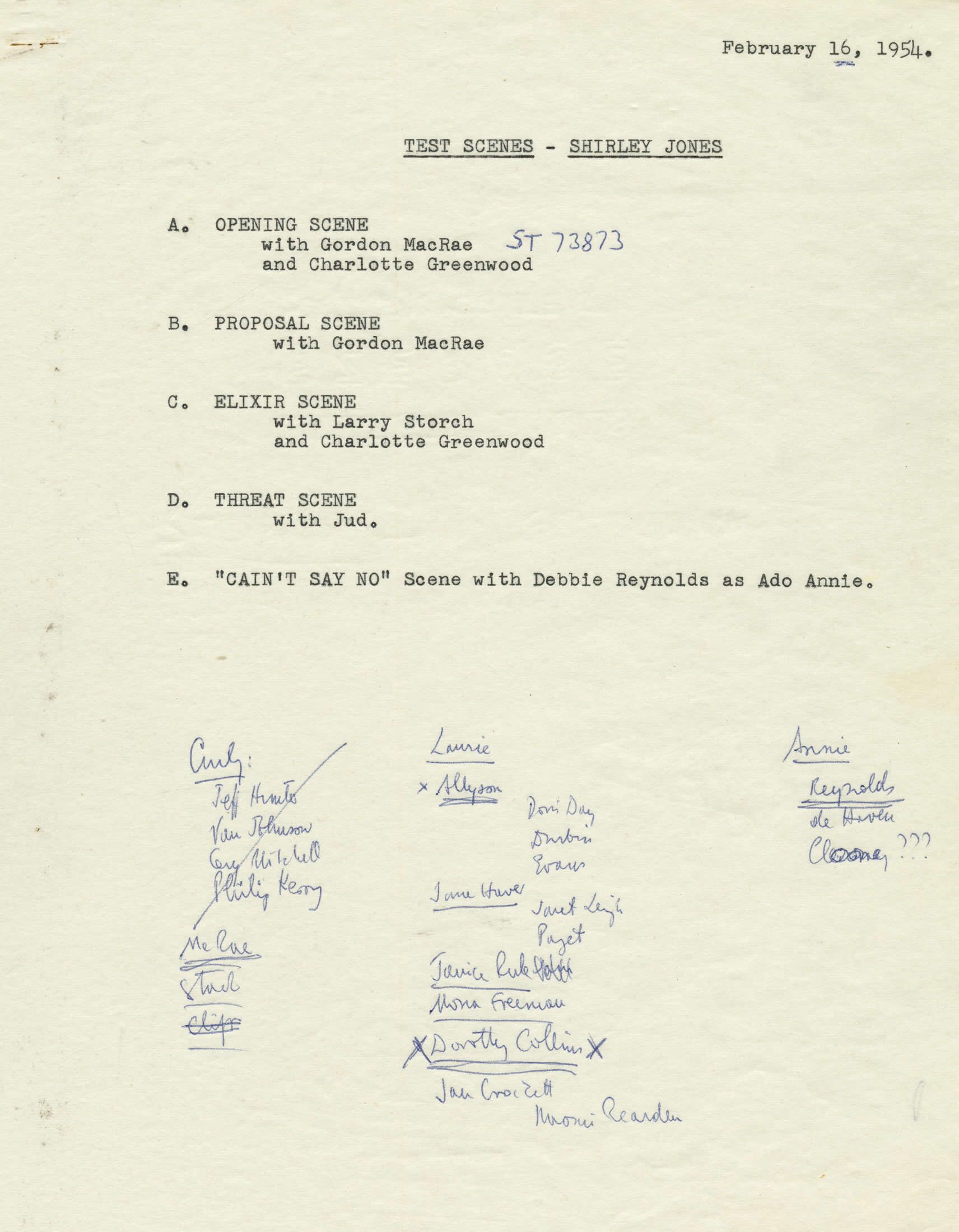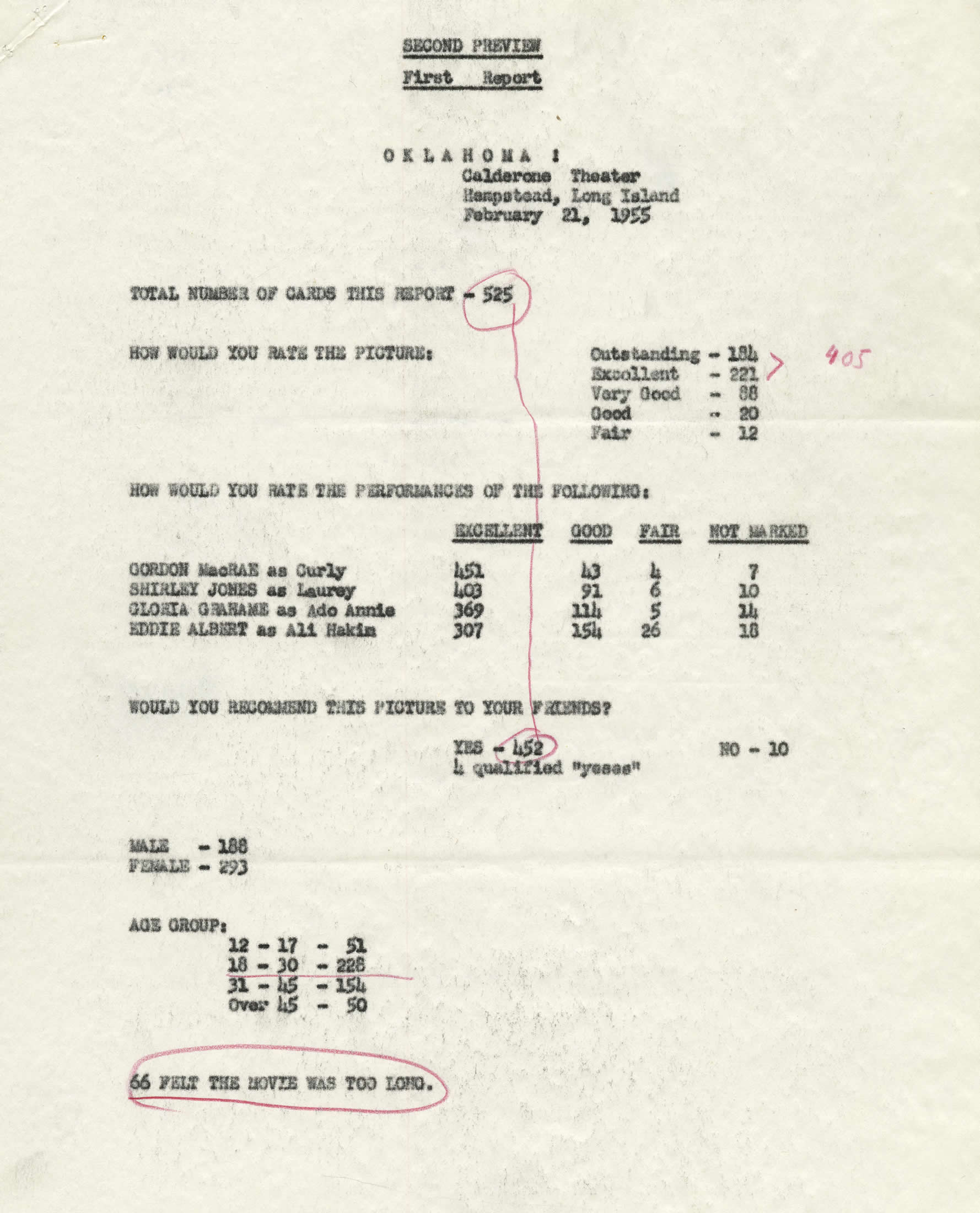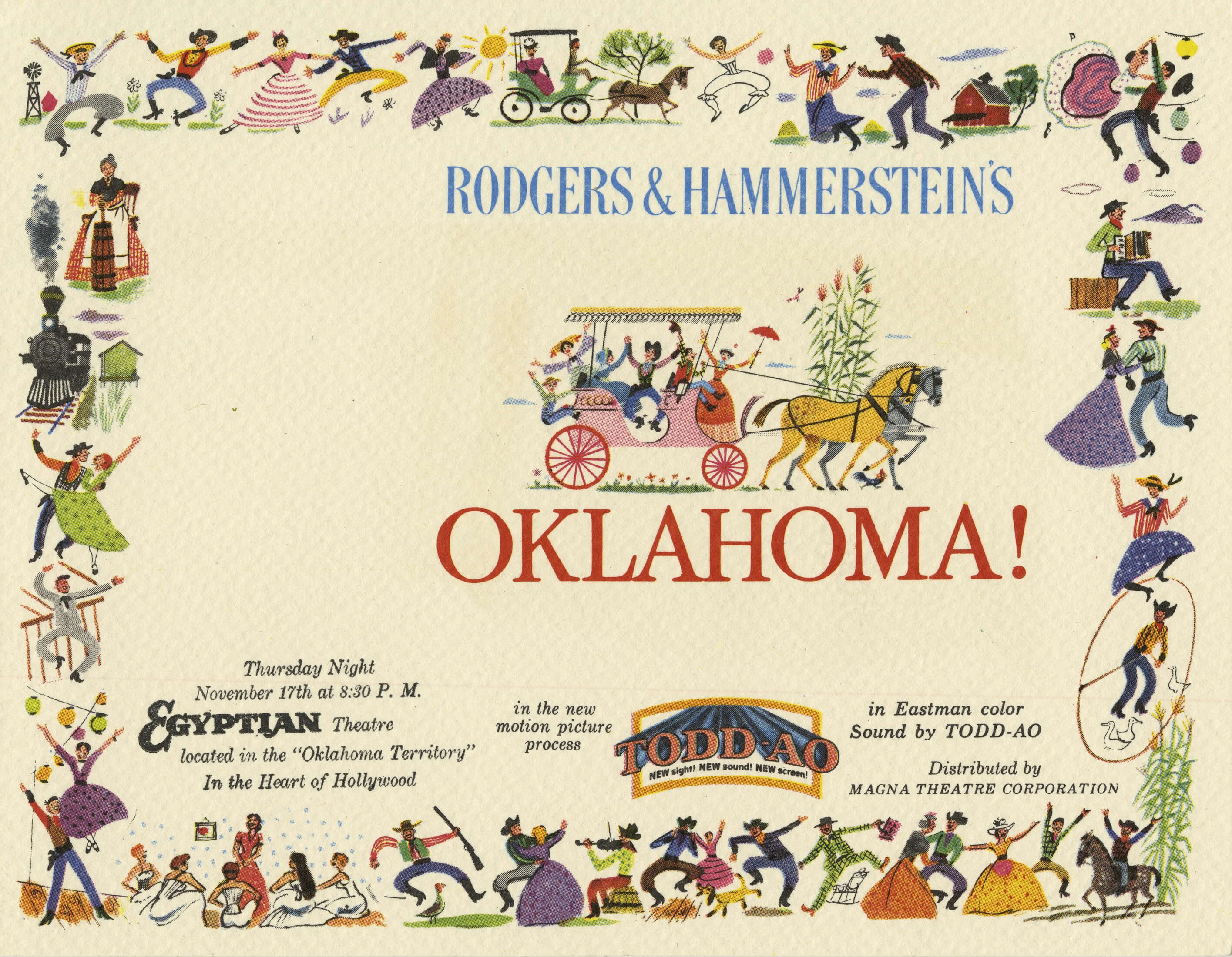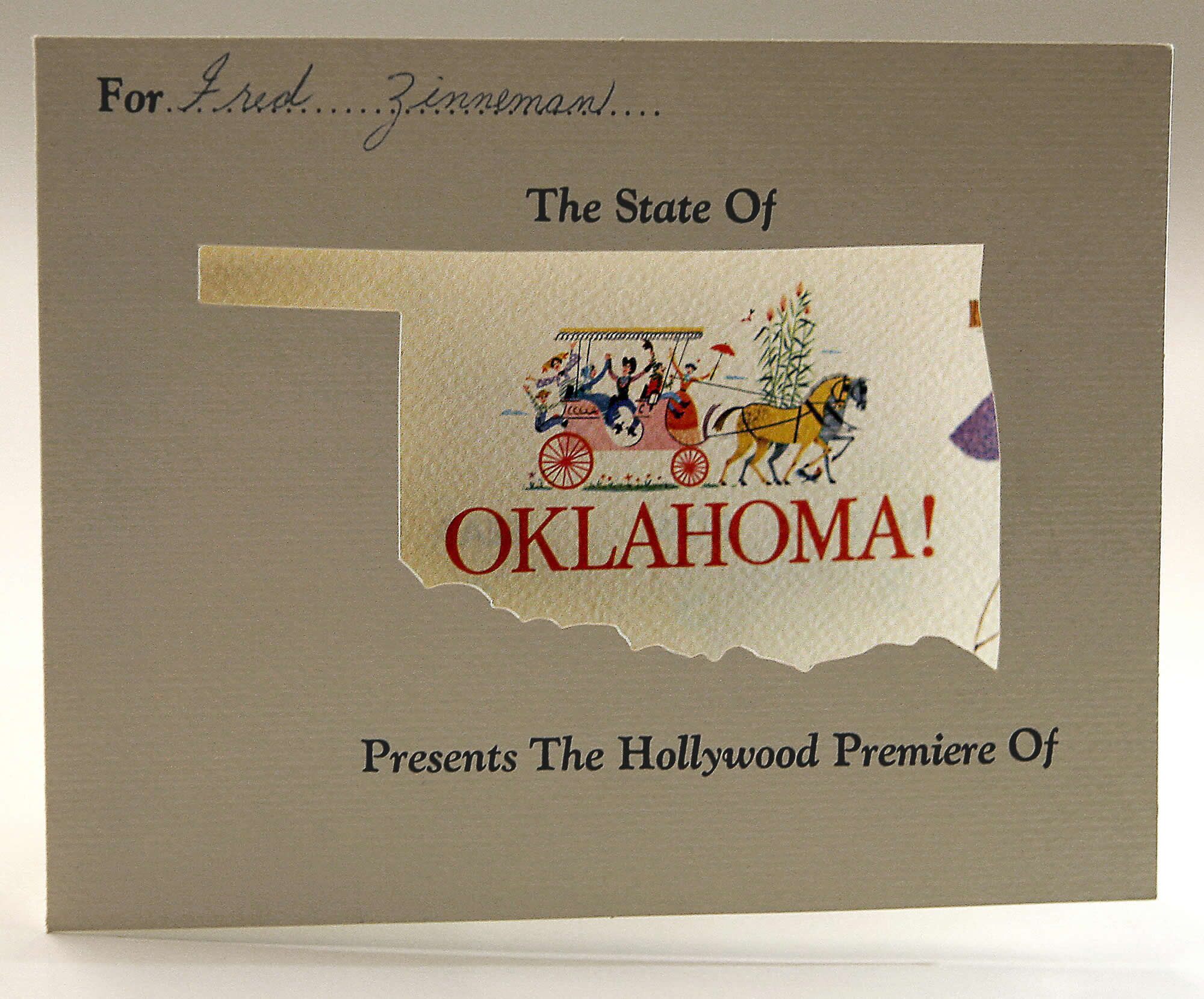As any movie fan can tell you, correct casting is vital to a movie’s success. This is especially true when a film is being adapted from an existing property, such as Rodgers and Hammerstein’s beloved stage musical Oklahoma! Actually, the rigorous matching of the correct person to each job began with picking the director who would steer the film version. The choice of Fred Zinnemann was unconventional because he had no prior experience directing a musical, and instead was known for dramatic fare such as High Noon (1952) and From Here to Eternity (1953). Zinnemann did want to be a musician early in life, however, and already had affection for the musical. Mike Todd, the man behind the Todd-AO process, and producer Arthur Hornblow, Jr. suggested Zinnemann to Richard Rodgers and Oscar Hammerstein II, who accepted the proposition. And thus an Austrian director of intense movie dramas was set to direct the film version of a distinctly American musical. Catch the restored Todd-AO version of Oklahoma! on the big screen at the Academy on May 29, 2015 as part of our summer series, This Is Widescreen.
Several actors were early contenders for the part of the leading male character, Curly. Paul Newman, who only had television exposure up to that time, was heavily considered. In a September 21, 1953 letter from Hammerstein to Zinnemann, Hammerstein expressed concern that no one had further pursued Newman for the role. A few days letter, Zinnemann did a screen test of Newman, noting to Hammerstein in a letter from September 30, 1953: “[Newman] is a handsome boy but quite stiff, to my disappointment” and that he needed “a little more cockiness and bravado.” During the same two days of screen tests, Zinnemann tested James Dean as Curly, with Rufus Smith playing Jud, in the smoke house scene in which Curly comically imagines how Jud’s funeral would play out. Zinnemann recognized Dean as a great talent, noting that his screen test could later serve as a reference for the actor ultimately chosen for the part, but expressed concern that Dean did not possess the “necessary romantic quality.”
Zinnemann also considered Frank Sinatra to be a strong contender, and stated in a March 12, 1954 report to Hornblow: “Oscar shares my feeling that Sinatra would be the ideal casting. He would like to bend every effort to see that we can get him.” Robert Stack, Richard Anderson, Dale Robertson, Vic Damone and Will Able were also considered for the role, but Gordon MacRae won the part. Zinnemann was not thrilled with this choice, however, as is evident in the following letter to Barbara Wolferman, who worked as Rodgers and Hammerstein’s casting assistant.
While the plum part of Laurey went to Shirley Jones, who began her stage career in 1953 after being discovered during open auditions for Rodgers and Hammerstein musicals, other actresses were also considered for the role. Early on, Joanne Woodward, who married Paul Newman in 1958, was a strong favorite. As Zinnemann noted to Hammerstein in a letter from September 30, 1953, after a string of auditions, “Joanne has a lovely quality. It may be that she is a bit too wistful for the part, and perhaps she doesn’t have quite the kind of radiance and vitality required for Laury [sic]. However, I was amazed at her ability to play the part believably – as though she were a very young and naïve teenager.” In November 1953, Ann Blyth was briefly considered for the role, but was unavailable due to her pregnancy. Florence Henderson, Joan Evans, Piper Laurie and Mona Freeman were also considered, but Jones won the role and made her film debut as Laurey.
Jud was a dark, moody character to cast. Rod Steiger’s audition left a lasting impression on Zinnemann, who wrote to Hammerstein in a letter from September 30, 1953: “He manages to make Jud an understandable human being. I believe that he sets a standard of performance which will not be easy to improve upon.” Jason Robards, Lee Marvin, Neville Brand and Murvyn Vye later auditioned for the role, but Steiger was ultimately cast.
Will Parker and Ado Annie, who serve as comic relief to the earnest Curly and Laurey, were also sought-after parts. Dancers Bobby Van and Bob Fosse were considered for Will, but the role went to the more seasoned Gene Nelson. Debbie Reynolds did a screen test as Ado Annie with Shirley Jones as Laurey, while Mamie Van Doren, a Marilyn Monroe type, tested with Casey Adams as Will. Although Gloria Grahame had done far more drama than comedy on-screen up to this point, she won the role of Ado Annie.
Phil Silvers and Eli Wallach were considered for the role of the peddler Ali, who sells subpar wares and serves as the romantic foil between Will and Ado Annie. Zinnemann was especially impressed with the screen test of Eli Wallach, reporting: “He was quite far away from any conventional acting and he got a great many laughs from the crew.” Casting notes indicate that Karl Malden, Danny Thomas and Ray Bolger also may have been considered to play Ali, but Eddie Albert, best known today for the television series Green Acres (1965-1971), landed the colorful part.
In the end, the casting choices got a resounding stamp of approval from audiences, as is evident in this page from a preview report in Special Collections in the Fred Zinnemann papers.
The Fred Zinnemann Collection at the Academy Film Archive also features behind-the-scenes footage of the iconic film. Shot on location in Nogales and Elgin, Arizona, the silent footage features Shirley Jones, Gene Nelson, Gordon MacRae, Oscar Hammerstein II, and other cast and crew members. This rare home movie offers a unique view into the film’s production, including shots of the specialized cameras used to film the widescreen musical.


